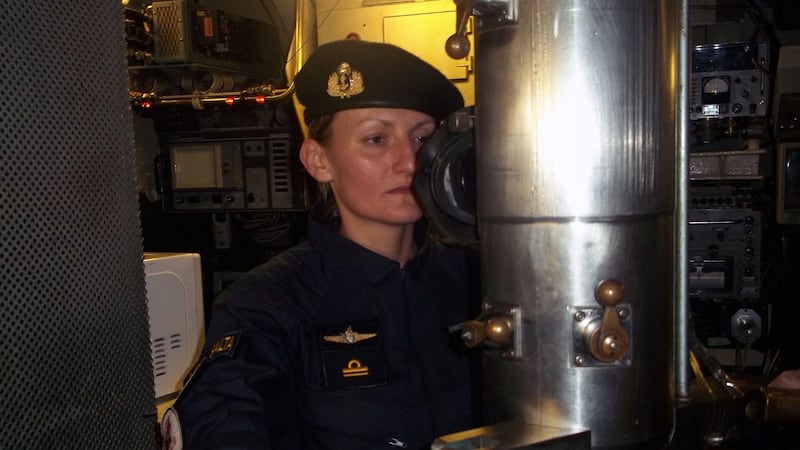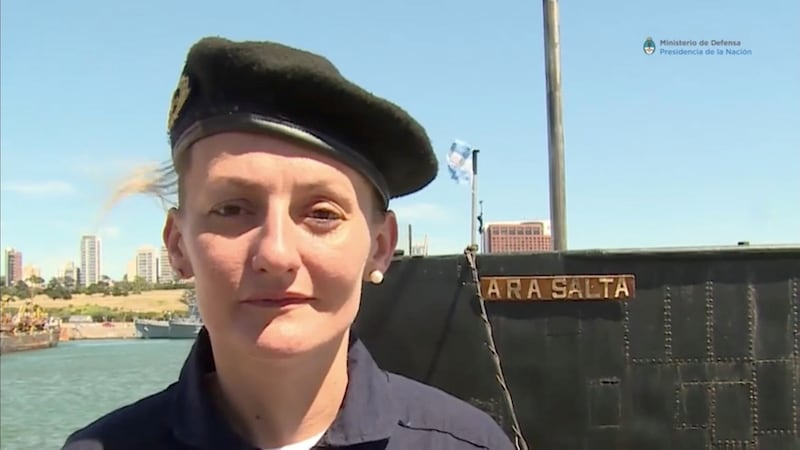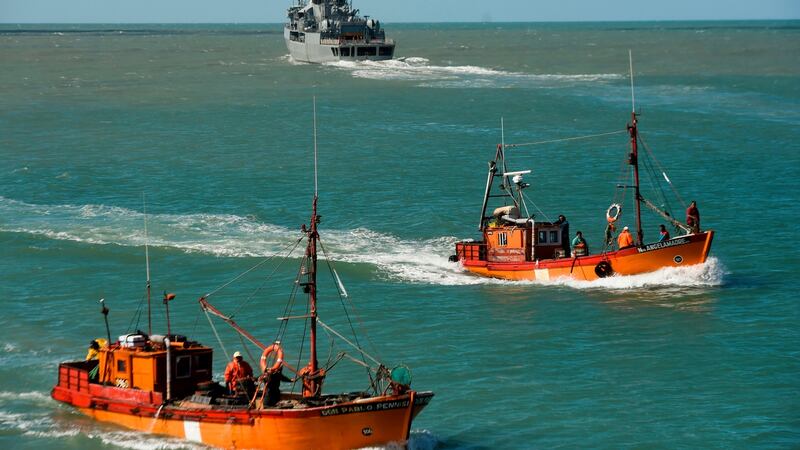It is a plot seemingly concocted for a cinematic submarine thriller. A submersible – one that, for diverse casting purposes, conveniently has among its crew its country’s first female submarine officer – suddenly goes missing on a routine exercise.
A frenetic search is launched after the sub’s captain reports a battery problem, but afterwards fails to report in or answer calls. There is no sign of the warship. Vessels from a dozen countries’ navies, most equipped with advanced technical search gear, join in the desperate hunt. Storm-tossed waves hamper the effort. There are frustrating false leads that raise hope. Families gather at the ship’s home base, anxiously hoping for good news.
This, unfortunately, is no feature film. It is all too real.
At time of writing, the plot is playing out in the seas off the coast of Argentina, where one of that country's three submarines has gone missing. The ARA San Juan, with 44 crew, has not been heard from since November 15th.
If the vessel should be stranded powerless on the surface, there is a good chance it will eventually be located, and its crew rescued. That is the best possible case. But were it so, the drama would likely already be over.

If it is submerged, the situation is far more ominous. And it grows increasingly desperate with each passing hour. Assuming no breaches in its systems, the vessel typically has enough oxygen to last comfortably for about seven days, 10 at the very most. If the crew has been unable to bring the boat up or to rig a “snorkel” – a tube to get to clean air from the surface – they are already on the ragged edge.
Relatively minor problem
The San Juan was on a training mission, returning to its home port at Mar del Plata on Argentina’s Atlantic coast, south of Buenos Aires. There was an earlier report of a relatively minor electrical problem, and then word of the battery fault. Still, there was no reason to suspect the vessel was in any serious trouble.
Then nothing.
With modern technology, how is it possible for a warship to disappear without a trace?

As has been the case for over a century, the “Silent Service” is often a victim of its own silence and stealth. These particular ships are designed to remain undetected. Throughout their history they have often failed to receive the recognition they deserved for their work, during both war and peace, simply because it is difficult to know where they are and what they are doing.
By their very nature, submarines are difficult to locate should something go wrong. They can sink in deep water, their exact location unknown. We are just now beginning to locate many of the wrecks of submarines lost during the second World War, and only then by employing sophisticated bottom-scanning gear developed for such work as petroleum exploration.

Few understand just how complicated these ships are. And what can go wrong. Even the most technologically advanced among them still rely on methods more than a century old.
Dizzying array of equipment
A ship that is specifically designed to sink requires tanks to flood with seawater to dive, powerful air compressors to blow that water out again in order to surface, and a dizzying array of pipes, valves, controls and pumps to make it all happen in precisely the right order and manner.
Otherwise, the sub can go up or down too quickly or at too steep an angle and lurch out of control in a mad, uncontrollable dive to the bottom that ends in catastrophe. It has happened. Many times.
The US Navy’s nuclear submarine, the Thresher, was lost with all hands in 1963, almost certainly due to mechanical systems not functioning properly during an emergency surfacing test.
There are no windows in a submarine – Jules Verne’s Nautilus notwithstanding. Navigation is conducted by sonar in most cases, using undersea charts. That usually works.

It decidedly did not when another US Navy nuclear boat, the USS San Francisco, hit an underwater mountain while speeding along submerged at 30 knots. Almost every man on board was injured and one crewmember was killed but they were able to surface and make it back to port. The cause of the incident? Their charts showed no such undersea mount in that part of the ocean.
Submariners routinely dive and surface over and over. Those are by far the most dangerous operations such a ship must perform. As with Thresher, even a minor mechanical failure during either manoeuvre can be disastrous.
Popping up
Crews must also be diligent to be sure there are no other vessels on the surface above them when they plan on suddenly popping up out of the deep.
Another US boat, the Greeneville, collided with a Japanese fishing vessel while surfacing in 2001, partly because the onboard sonar screens on the sub were not functioning properly. Nine passengers on the surface ship perished.

The ARA San Juan was put into service over 30 years ago but has reportedly received regular maintenance. It is not a nuclear-powered vessel like many submarines are today, thus eliminating the risk of a reactor breach or radiation leak. Instead, the 66m-long vessel uses four diesel-powered engines and an electric motor for propulsion, a system very similar to those used in the World Wars and until the Cold War. She carries eight 120-cell storage batteries.
Those batteries have caused deadly problems in submarines. They are capable of giving off poisonous and explosive gas. Should there be a seawater leak, the cells can generate deadly chlorine gas. Submarines have been lost to explosions or fire involving the batteries or other parts of their complex electrical systems.
Submariners fear fire and smoke even more than flooding or sinking. If there is a blaze and the sub is unable to get to the surface, the smoke alone may be more than enough to claim the lives of the crew.

Despite all these potential issues, today’s submarines are relatively safe when operated properly and by a well-trained crew, and when sufficiently maintained. Most of the world’s navies require sub crew members to be qualified in many different duty stations on the ship, so anyone can step in during an emergency and help save the vessel.
Even so, as with major aircraft accidents, if something does go wrong, the results can be catastrophic.
Combat pay
In most navies, submariners are all volunteers. No one faces conscription to submersibles. And most receive hazardous-duty or combat pay for such responsibility, even in peacetime.
Submariners pray that their ship dives and submerges an equal number of times. When a submariner dies, or when a crew is lost at sea, sub veterans say that their brothers – and theirs is a strong brotherhood – have “departed on eternal patrol” and the sailors may now “rest their oars”.
They point out that when a submarine is lost, there is no place to put a memorial or monument on the roiling surface of a cruel and unforgiving sea.
Let us hope and pray, though, that the search for ARA San Juan is yet fruitful, that the crew is located and rescued safely, that they are not yet on their eternal patrol.
Don Keith is anan author, historian who has written extensively on World War II history and especially and expert on submarines. His fictional naval thriller, Firing Point, will be released as a film in 2018 under the title Hunter Killer.











